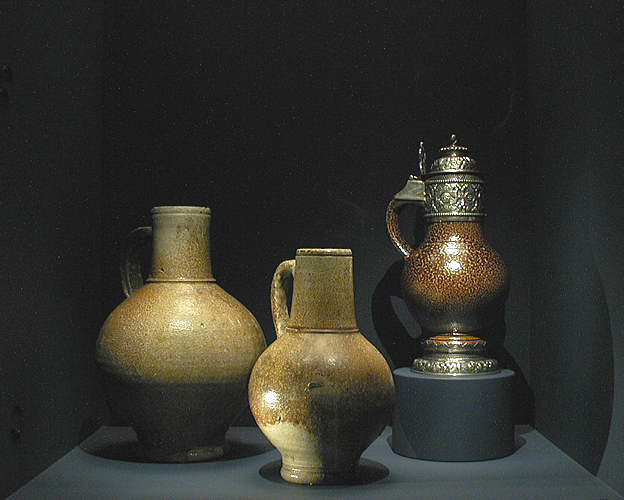
The buyer needs a hundred
eyes, the seller not one.
George Herbert, Jacula Prudentum, 1640
The pots shown here demonstrate the time-honored collector’s adage: If
something looks too good to be true it probably is. The two lidless Rhenish
vessels on the left were in common use in England between about 1590 and 1640.
Their straight necks were well suited to be enriched with silver or silver-gilt
mounts and lids. The jug to the right (3) has such enhancements, but a Chester
(England) hallmark for 1911 leaves no doubt that the mounts are reproductions.
When the piece came up for auction several years ago the stoneware jug was
said to be from the seventeenth century. Only later did the Noël Humes
discover that it too was made in the early twentieth century.
Among the signs of the jug’s recent vintage is its salt-glazed surface,
which is too even and perfect. Another telltale detail is that it lacks the
sharply defined ridge that separates neck from body on the original Rhenish
examples. This copy is believed to have been made by the Doulton manufactory,
in its Lambeth or Burslem factory, the latter located near Chester where the
jug’s “Elizabethan” silver mounts were added.
1.
Jug, salt-glazed stoneware. Rhineland, Germany, ca. 1590–1640.
2.
Jug, salt-glazed stoneware. Rhineland, Germany, ca. 1590–1560.
3.
Jug, salt-glazed stoneware with silver mounts. Jug made by Doulton, Lambeth
or Burslem, ca. 1911. Silver mounts made in Chester, 1911.

